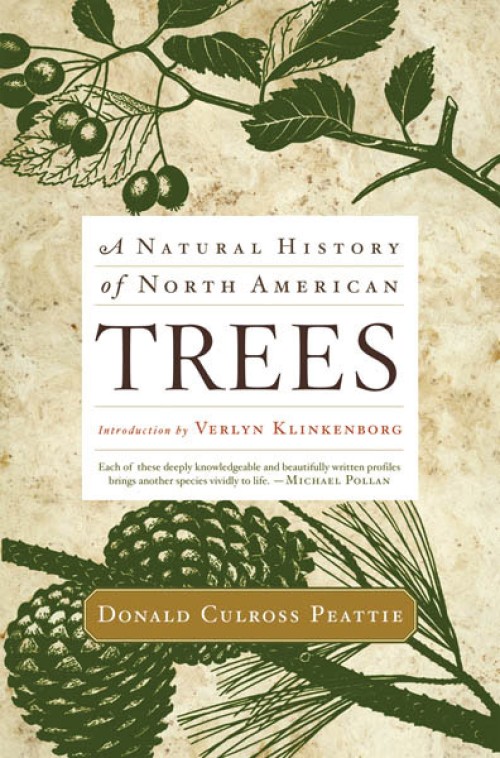by Donald Culross Peattie
Houghton Mifflin, 2007
To assimilate the full value of many books, a reader must start at page one and continue to the end. Other books, however, may be consumed, like a rich dessert, a portion at a time. Such is the case with The Natural History of North American Trees by Donald Culross Peattie. When first published nearly 60 years ago, the work was in two volumes: the first concentrated on trees in eastern and central North America; the second on trees in western North America.
To combine the two volumes, editor Frances Tenenbaum pruned the minor trees and “unwieldy” descriptions. The resulting distillation includes 112 of Peattie’s elegant essays and 135 of Paul Landacre’s exquisite scratchboard illustrations in one, 490-page volume.
At first glance, this work appears to be a book about trees. Don’t be fooled. It’s much more than that. Peattie infuses each essay with scientific information, cultural history, and details about the products made from various trees and their importance to commerce. Each essay – a biography of a tree, really – easily stands on its own.
First among Peattie’s descriptions of pines is the eastern white pine. The book devotes 10 pages, plus a magnificent, full-page illustration, to this familiar species. This essay includes not only a natural history of the tree but also an important window into the history of settlement in New England and why colonists pushed to liberate themselves from England.
He also lavishes praise on another well-known Northeastern tree, saying: “If oak is the king of trees, as tradition has it, then the eastern white oak, throughout its range, is the king of kings.” The British Royal Navy lusted for oak but considered the American eastern white oak to be an inferior species. American shipbuilders learned to master the wood, though, by carefully drying the lumber. Peattie states: “The immortal frigate Constitution had a gun deck of solid White Oak of Massachusetts. … All-Oak ships became the pride of our shipbuilders; not good enough for the British Navy, they were just good enough to carry the New England sea captains around the world.”
Of particular interest are the précis biographies of the explorers and naturalists who discovered and were the first to describe trees and woody plants in the New World. These include Archibald Menzies, who in 1792 described the vast “impenetrable stretches of Pinery” in the Pacific Northwest. And David Douglas, who went inland in 1825 along the Columbia River and measured trees he knew as Pinus taxifolia. Peattie stated, “The largest he could find was 227 feet long and 48 feet in circumference.” We now know that tree as Douglas fir.
Because this volume is an amalgamation of Peattie’s writings on trees found throughout North America, some species will be unfamiliar to those acquainted with forests in the Northeast. That shouldn’t matter. With Peattie’s guidance, learning about new species is an easy armchair adventure. Perhaps the most amazing aspect of these essays is their breadth – clearly Peattie knew most, if not all, of his subjects firsthand.
In the second half of the 20th century, Peattie was one of the most widely read nature writers. Reading this volume, it is easy to understand why. On nearly every page, I learned something new about a tree, its wood, or its place in the cultural history of this nation. The writing is elegant and learned without being pedantic. The illustrations are exquisite. As I read this book, I felt as though I were walking through the woods with Peattie, talking, observing, and learning about the land he loved and the trees that occupy it. A Natural History of North American Trees is a wonderful book to read, savor, and treasure.


